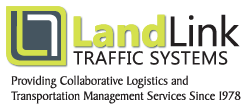The North American Transportation Industry is tremendously dependent upon labor unions. From the airline industry, railroad, trucking, parcel, and ocean transportation we rely on organized labor to make everything move. Labor pains in any one segment can have a rippling effect on the entire transportation infrastructure. The trucking strike of the mid 90's caused a backlog of freight on shippers docks and truckers terminals that independent and private trucking companies simply could not absorb. The recovery took weeks costing shippers by using alternative, and now in demand, transportation options. The rippling effect of the strike was felt in nearly every sector of manufacturing and consumer goods nationwide. In 1997 a 15 day strike by UPS labor managed to reduce the average daily package delivery from 12 million per day to 1 million. The strike cost UPS an estimated 125 million dollars in lost revenue and considerably more in labor concessions to settle the strike. Subsequent strikes by American Airlines and Amtrak were halted by a back to work order by then President Clinton. In Canada, St. Lawrence Seaway workers are planning a strike that would shut down the waterway by the end of this month. Unifor, a Canadian union with 460 members belonging to five locals that work along the Seaway, has served 72 hours notice of a strike that could begin Friday afternoon at 12:15 p.m. Unifor said a key issue is staffing levels at the locks as the Seaway moves to automatic mooring, eliminating the need for workers currently working at locks among the Seaway. The application of automated, "worker less" operating systems is bound to be a contentious issue for labor unions. Just the same technology marches on. Lowes announced this week it is testing robots in the stores to act as customer service representative directing shoppers to the goods they seek. It's unrealistic to protest the application of thechnology in any industry. Stockholders interst trumps labors position on preserving jobs. Perhaps it would be a strategic move for the unions to recruit robotic engineers to maintain the inevitable technology applications ahead.
Organized labor is a defacto cost of doing business. Though the unions may have lost some strength in recent decades they still have enough juice to disrupt the movement of goods across North America. Voices of reason for both labor and management hope to quell rank and file unrest while mitigating the cost of moving goods effectively though the system. Technology will have to be an embraced part of the equitable peace.


 Land-Link, a well respected professional organization, has been providing its clients with effective transportation and logistics solutions since 1978.
Land-Link, a well respected professional organization, has been providing its clients with effective transportation and logistics solutions since 1978.

